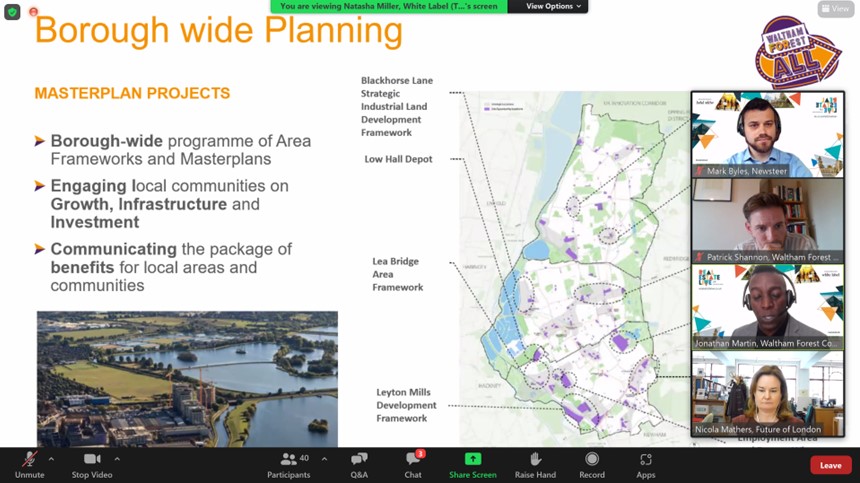Yesterday, Associate Director (Regeneration & CPO), Mark Byles, joined a panel at Real Estate Live, to consider how the industrial sector can support regeneration and growth. Together with Stewart Murray, Jonathan Martin and Patrick Shannon from London Borough of Waltham Forest, Savills’ Bridget Outtrim and Simon Perks of industrial developer, Prologis, the panel shared live examples of how the borough is creating a new industrial approach to support regeneration now and in the future.
The industrial sector has largely supported regeneration and growth by being deleted over the last 20 years and I firmly believe it has a greater role to play in the next 20.
24% of London’s industrial floorspace has been released in the last 20 years. Prior to 2015 it used to be the prevailing theory that you could only achieve incremental change in employment led areas through piecemeal enhancement of individual properties. With comparatively low capital values and low base build costs this was largely true, but since then we have seen sustained rental growth and acute yield pressure through the lack of supply of new industrial space to keep up with the space being lost. It is now no secret that industrial land values in London have outstripped all other uses which has implications for housing delivery.
Whilst supply has been historically down, Brexit and the pandemic has accelerated changes to the industrial sector by increasing our reliance and demand for on-shore industrial and logistics outputs such as energy, last mile delivery and media production which has in turn introduced new occupiers. Many of those occupiers have significant capital to invest in new premises, spending power to acquire sites but also a sophisticated supply chain that stretches beyond the borders of one local authority area, a requirement for highly technical jobs and to offer their employees an attractive working experience alongside strong ESG goals. Is an out-of-town, car dominated business park with no trees or a café or a pub in sight going to cut it anymore?
The industrial sectors contribution to regeneration does not just need to mean delivering mixed-use communities where residential is awkwardly co-located alongside 24/7 logistics space or alternatively only located on top of the cleanest possible Use Class E (iii) space to satisfy a policy test. Yes there remains an insatiable demand for housing and we could do a whole seminar on the challenges and opportunities of co-location, but to continue to service our growing housing development pipelines, which aren’t located on industrial sites, we need an increase in industrial space to be delivered to sustain and service those homes. We are also going to struggle to meaningfully address the climate emergency if our inner and outer London boroughs are reliant on distribution centres in the midlands and the north.
Here are my four key takeaways:
- There is an opportunity right now to deliver regeneration of our employment areas through co-ordinated masterplanning that prioritises the needs of industrial businesses and encouragers investment in industrial premises. This does not need enabling residential Design of the industrial space to ensure functionality and value is critical – requiring specialist input that goes beyond purely residential architects.
- Ensuring masterplans are deliverable is challenging for industrial estates that are often in fragmented land ownership. Local Authorities are well placed to deliver economic regeneration through coordinated delivery under a common vision using their land assembly tools including effecting through Compulsory Purchase as a last resort
- The occupiers, investors and developers that I speak to always tell me that their three priorities are location, workforce and power. Those three priorities have shifted in order over the last few years but the prevailing view is that workforce and power are the current top priorities. Newsteer have been working on schemes in industrial estates which necessitate that every new development delivers its own substation. A significant development cost that could be better spent if the infrastructure was coordinated. What can the public sector do to better coordinate and influence the utilities companies?
- How many Local Plans are reliably predicting an increase in employment floorspace? Using historic take-up in a supply constrained environment to forecast future demand requirements is inherently flawed. We need to use better metrics including real-time data to get better evidence to support our policy decisions and create new policies that encourage and enable industrial businesses to thrive. How about an economic land delivery test?
To find out more, contact Mark Byles or visit Regeneration & CPO to find out more about our services.

